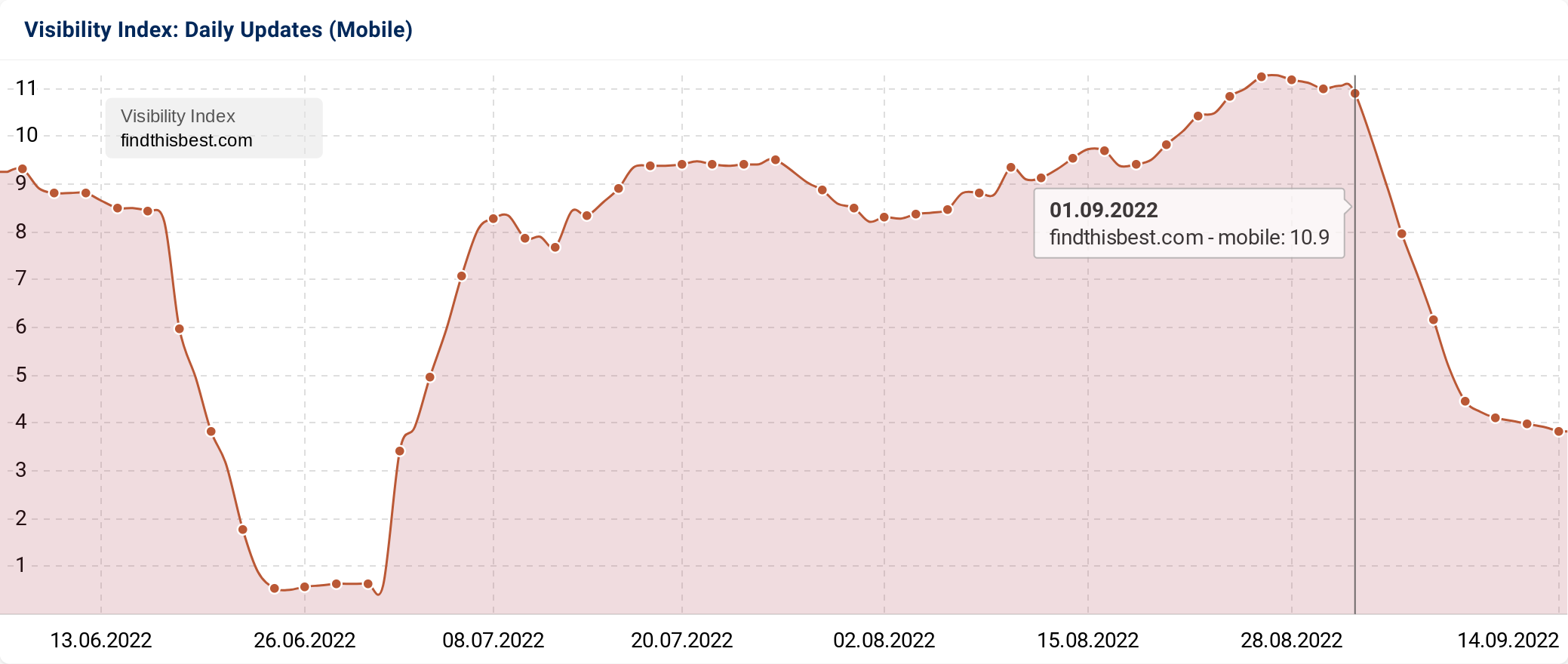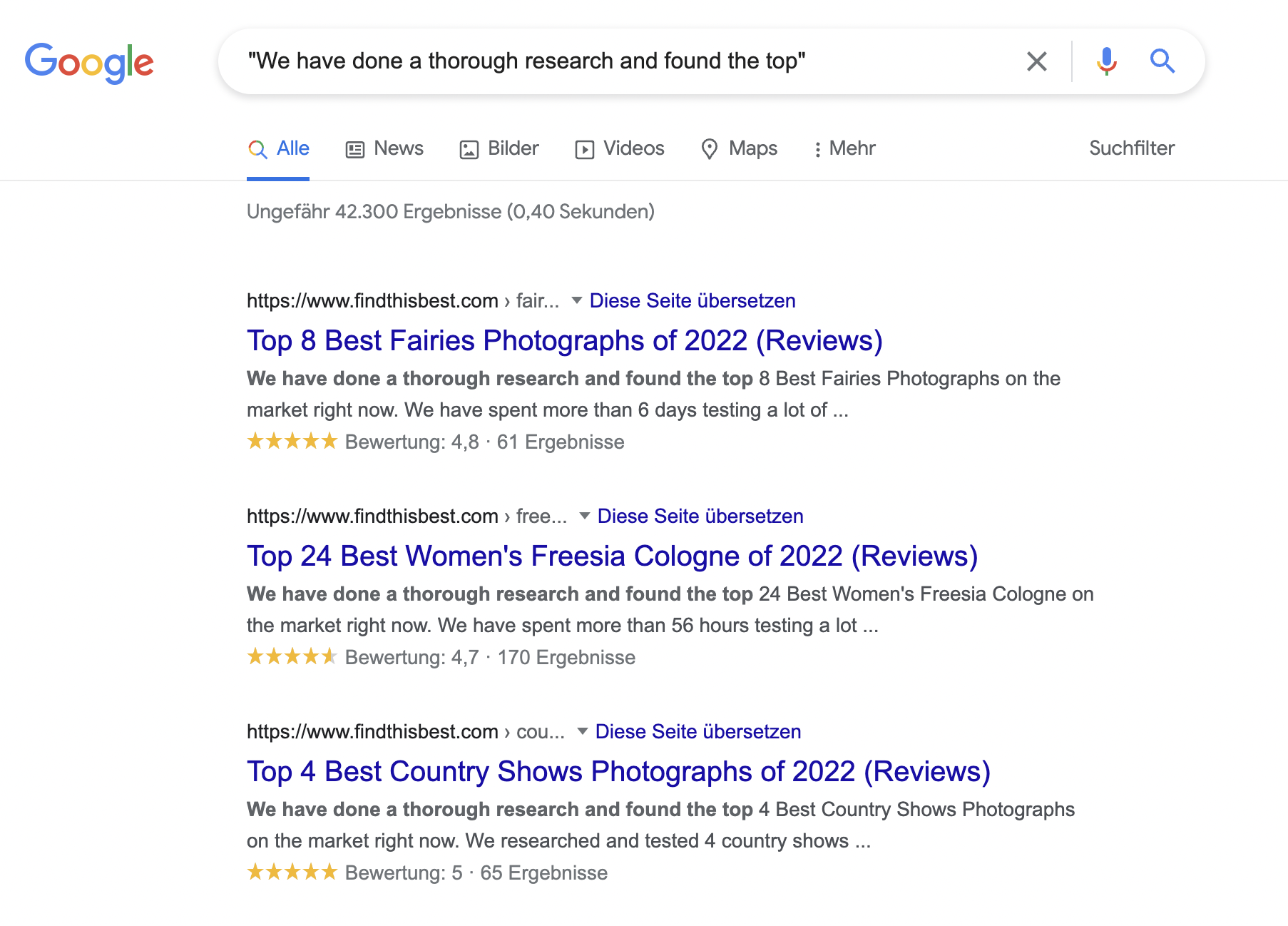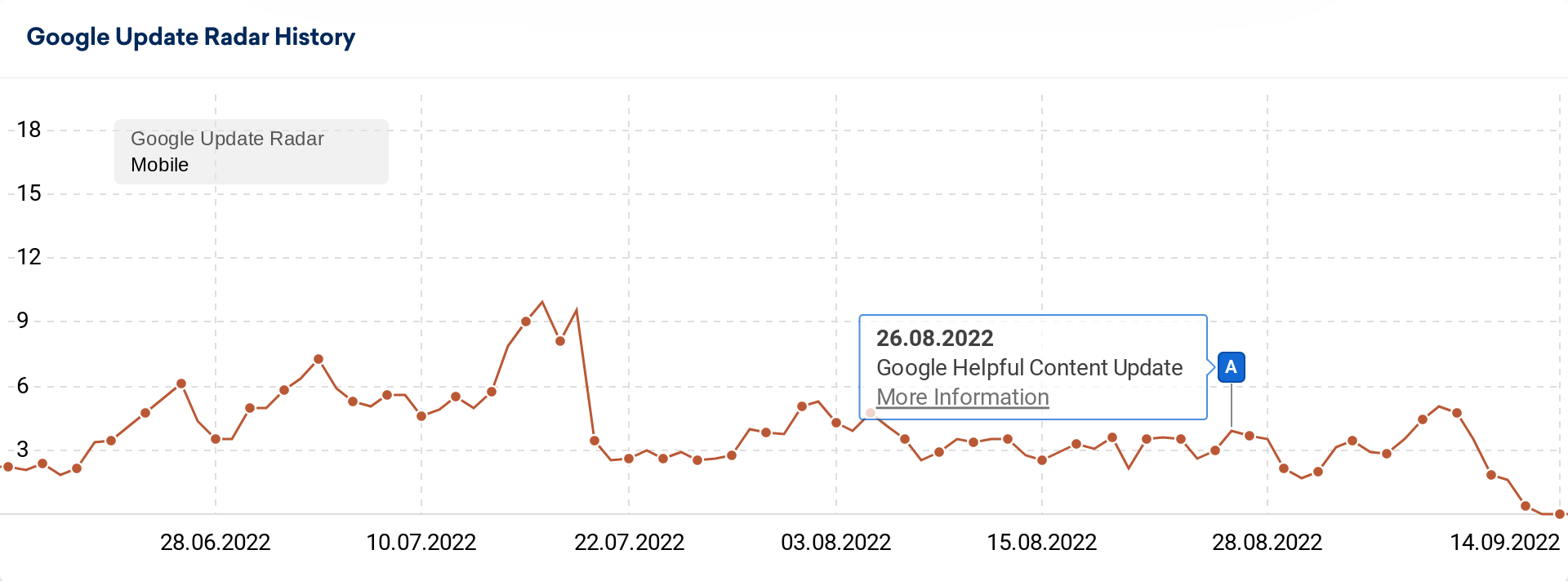It made a strong start, then took a nosedive; the first Helpful Content Update did not fulfil the expectations of the SEO community. The following article, from two industry experts, includes observations and a conclusion that we can all learn from.
Google announced the Helpful Content Update with the goal of achieving better content in the search results.
Although the update is actually about banishing poor content far to the back of the results, we’ll just leave it at that and continue, at least for a while, with Google’s positive narrative.
After a long and extensive announcement precisely nothing happened in the first few days of the Helpful Content Update. There were no SERP movements beyond a usual normal level. Google announced that the update had officially ended last Friday.
Although the scope of shifts in the last days of the update was not even remotely comparable with smaller core updates, there are still websites that are visibly affected by this update. An example:
Example: findthisbest.com
In the US, findthisbest.com, a platform for product recommendations, is one of the big losers of this update. The domain went from around 10 down to 4 Visibility points, a drop of around 60%. Interestingly enough, the domain already had Visibility problems a few weeks prior:

Over 50,000 URLs rank on Google with a wide variety of topics and products. When taking a closer look, you will see that these pages all look quite similar:

Now, if we take individual sentences from this page and search this exact sentence on Google, the search engine finds more than 40,000 occurrences – all of these on the previously mentioned domain:

Thus, we can see here that the website operators resort to what is known as text spinning: new texts are created and automatically reused with the help of templates and variables.
More examples, and a list of domains that lost visibility during the period of the update are available here.
Assumptions about the influence of the update can also be made for many website categories, such as ringtone, coding and lyrics pages. The general impact, however, stayed relatively small, compared to other updates.

Critical Reflection and Comparison: Theory and Practice
First of all, it makes sense to look back on the interpretations and expectations that could be derived from Google’s announcement and the eventual results. Here are the key statements from Google’s announcement.
- Focus on “people first” content
- The update was a “sitewide” update that was intended to affect not just individual pieces of content but content on entire websites.
- The recurring reference to expertise suggests that it should also be an update with E-A-T.
These points are expanded and analysed in a detailed article by Olaf Koop at Search Engine Land but, to summarise quickly, many of the assumptions, and even statements by Google itself, have not been observed to this day.
Immediately after the Helpful Content Update, Google started rolling out a two-week Core Update. In contrast to the HCU, as is typical for Google, there is no information about this update.
With no big explanation, no outreach, it raises eyebrows.
Helpful Content Update as a PR campaign
Like almost every company, Google has communication goals that are pursued through marketing and PR. Search is the most important product for Google and therefore it is logical that PR should be done for this product.
The PR we saw with the Helpful Content Update shows typical traits of a professionally organised campaign. The title, as it was with the Page Experience or Mobile Friendly update, tells us exactly what’s going on. This isn’t Panda, Hummingbird or Core.
The detail in the outreach was more than usual too. Some SEOs were even consulted before any announcement was made and detailed expectations for SEOs were laid out.
As a result, the Helpful Content was a big topic for over 2 weeks, reaching out as far as mainstream media. To date there are over two hundred thousand results on Google for “Helpful Content Update.”
The result: Google successfully announced that ‘search is more helpful than before’ and the word about the risks of low-quality content have now reached many SEOs. In return, it could help Google to keep the amount of new, perhaps AI-produced content, down.
Conclusion
Google’s communication leaves a bad taste: in advance, Google raised high expectations. Effects like those of the Panda update were in the air.
For us SEOs and the industry, the realisation remains that we are important stakeholders for Google for the dissemination of their company messages. Here Google shows a change in PR and communication in recent years and seeks closer proximity to influential personalities from the SEO industry. While some SEOs used to be annoying because of their manipulate tactics, Google now sees the SEO industry as an extended mouthpiece and multiplier.
The current results show once again: The louder Google has to announce an update, the smaller the ultimate impact. This has been shown with the SSL update, the Page Experience update and now again with the Helpful Content update.
The SEO industry should be aware of this and deal critically with the reports from Google and, with the next major advance announcement of an update, balance emotional enthusiasm with rational thinking.


